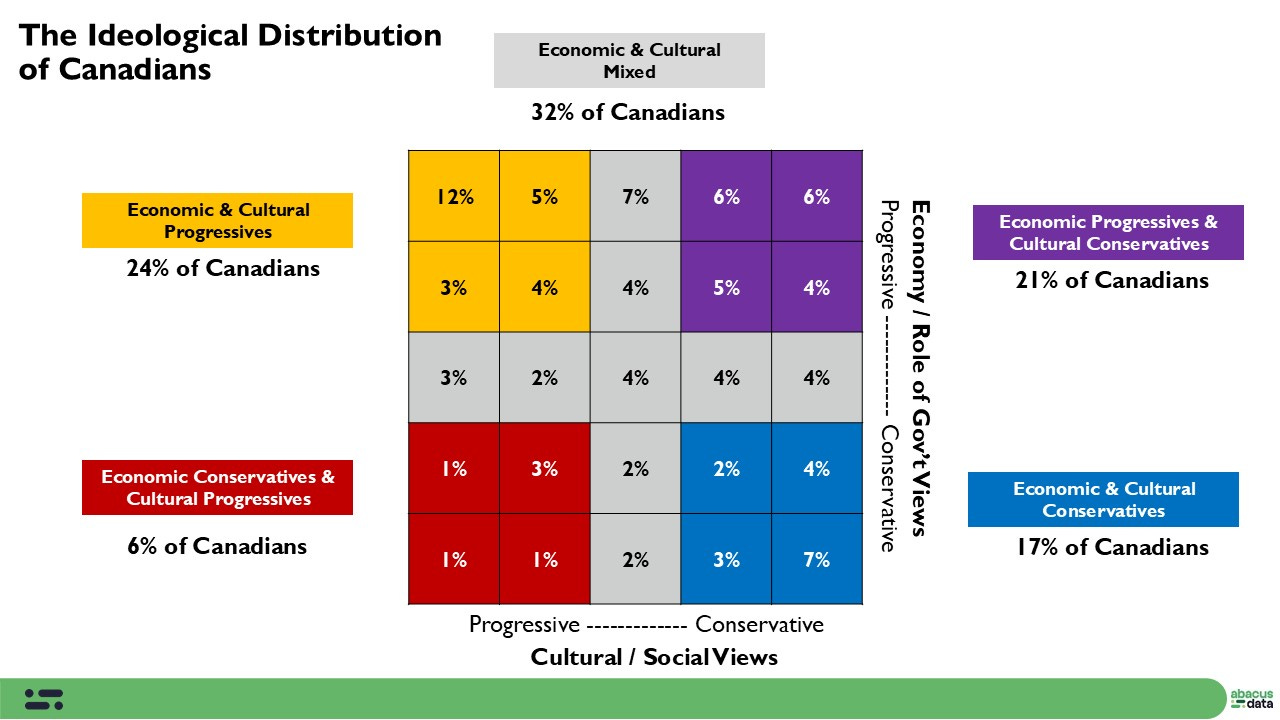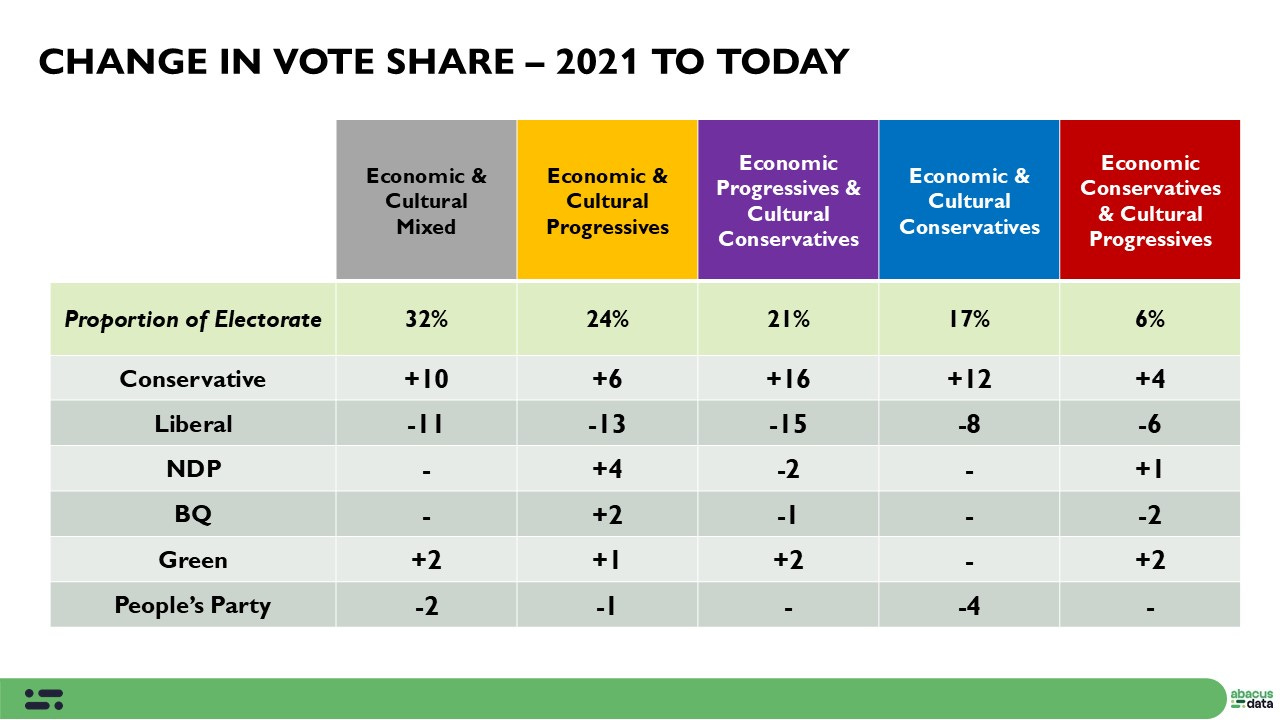Could Tariffs Refocus Some Voters and Open Minds to the Liberals?
Why I think the economic progressive/culturally conservative segment is up for grabs now.
With confirmation moments ago that the Trump administration will impose 25% tariffs on Tuesday, I’ve been thinking of the consequences on future political behaviour. Today’s news—and the broader fallout they could trigger—may well tip the balance for Canadians who lean toward economic progressivism but also hold culturally conservative views.
For these economically progressive, culturally conservative Canadians (constituting 21% of the electorate), it’s less about ideological purity and more about feeling secure in the face of sudden external threats. When the news carries headlines about steel or auto parts being targeted by U.S. tariffs, these voters look to leaders who promise to stand firm, preserve jobs, and keep Canada competitive. They want reassurance that their livelihoods and communities won’t be sacrificed on the altar of free trade or diplomatic entanglements.
At the same time, they aren’t enthusiastic about slashing social programs or shrinking government. This cohort values a sturdy social safety net: they support public healthcare, relief for struggling families, and community investment. But on cultural issues, they’re uneasy with swift changes, especially when those changes feel imposed from urban centres or elite institutions that may not understand small-town life, the traditions they cherish, or concerns about social cohesion.
Faced with the economic effects of tariffs or other disruptions, these voters may gravitate toward a party that shows it can protect the local economy, deliver tangible help for industries under siege, and push back effectively when Canada is under threat. An interventionist, high-spending strategy could resonate strongly here, if their frame shifts.
In other words, they’re open to big government if it means standing up for working people and shielding Canadian jobs, but they want to see an approach that isn’t dismissive of their cultural apprehensions.
This group is critical as it has shifted the most in voting behaviour (actual and intended) as the table below reports. The Conservatives have gain 16-points in share among this group while the Liberal have lost 15-points. The biggest swing of any group.
If this group shifts its support based on who they think will best protect them and their communities, the electoral map changes dramatically.
Campaigns that focus almost exclusively on social liberalism, for instance, risk pushing these voters into the arms of a rival party that promises economic intervention without questioning traditional values too harshly. By contrast, candidates who double down on harsh cultural rhetoric while offering little in the way of economic safeguards might also miss the mark—these voters don’t want austerity and cutbacks.
Ultimately, it comes down to the lens through which they’re viewing the election: in times of perceived external danger, economic solidarity can trump cultural friction. When a party convinces them it will firmly defend their jobs, honour Canadian traditions, and still look out for the vulnerable, it can harness a crucial slice of the electorate.






